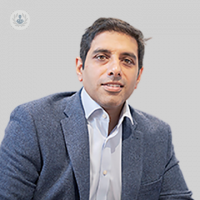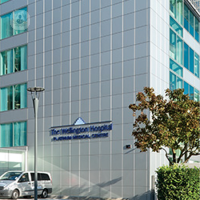Cholangiocarcinoma (bile duct cancer)
What is cholangiocarcinoma?
Cholangiocarcinoma or bile duct cancer is a cancer consisting of mutated epithelial cells originating in one of the ducts that carry bile from the liver to the small intestine. The tumours are usually slow-growing and do not metastasise quickly. However, the majority are well advanced when detected.
Cholangiocarcinoma affects people of both sexes and most patients are more than 65 years of age. It is, however, a rare disease that only occurs in 2 out of every 100,000 people.

What are the symptoms of cholangiocarcinoma?
Cholangiocarcinoma obstructs the bile ducts, and may involve any of these symptoms:
- jaundice (yellow coloration of the skin)
- pale stools/dark urine
- abdominal pain and possibly, swelling in the upper right-hand side that may also affect the back
- itching
- loss of appetite
- weight loss
- fever, chills
- severe loss of libido
Causes of cholangiocarcinoma
Cholangiocarcinoma can appear anywhere in the bile ducts and it is a rare type of tumour. The main risk factors for this disease are:
- Abnormalities of the bile ducts, e.g cysts
- Liver and bile duct inflammation
- Biliary stones – similar to gallstones, these hard objects form in the liver and bile ducts
- Infection with hepatic fluke parasites (common in Asia)
- Primary sclerosing cholangitis – an inflammatory disease that causes long-term scarring of the bile ducts
- Exposure to toxins or chemicals
Can it be prevented?
Cholangiocarcinoma is usually detected when it is already in an advanced state, and that some of its symptoms such as fever or abdominal pain can be confused with other diseases.
Currently, there is no known way to prevent it. Therefore, early diagnosis is essential for a good prognosis. To diagnose cholangiocarcinoma, the oncologist will perform tests, such as abdominal computerised tomography (CT) and abdominal ultrasound.
What is the treatment for cholangiocarcinoma?
In many cases, cholangiocarcinoma is not curable, as it is usually only diagnosed at an advanced stage after it has grown and spread. However, even at that stage, treatment can help control the symptoms for months or even years.
Treatments for cholangiocarcinoma include:
- Inserting a stent (a hollow tube) into the bile duct to keep it open and prevent it becoming blocked, relieving certain symptoms, e.g. jaundice.
- Chemotherapy
- Radiotherapy
- Surgery – only suitable for certain patients, but by surgically removing the affected area, the cancer could be cured entirely if it hasn’t spread to other parts of the body.









